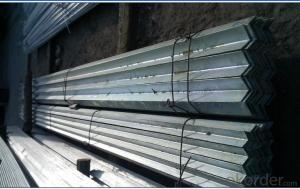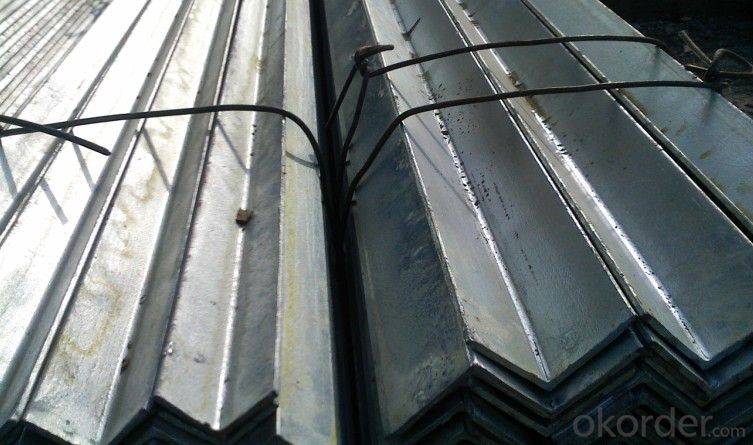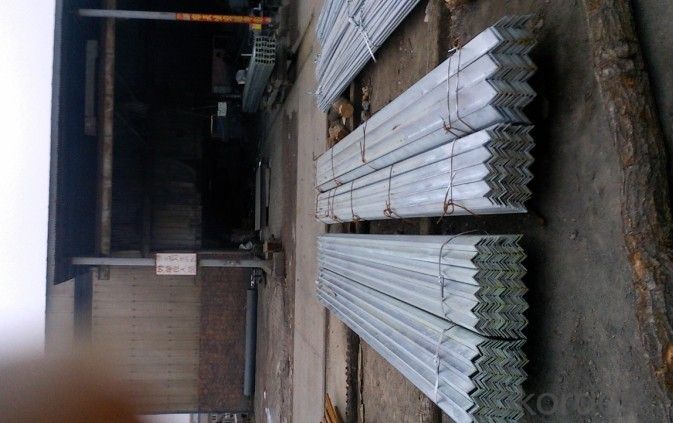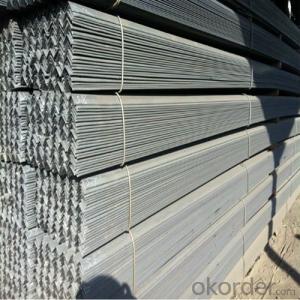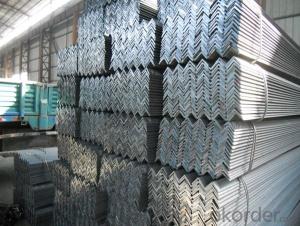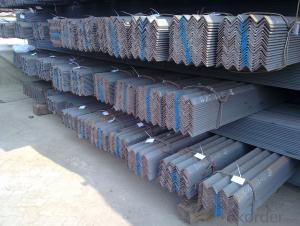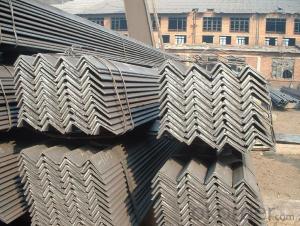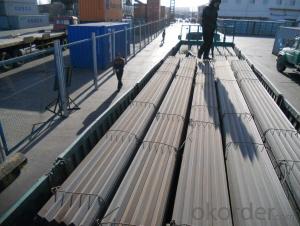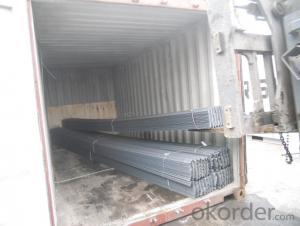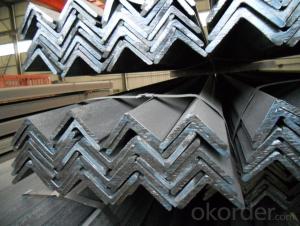Hot Rolled unequal Angle Steel for instruction building
- Loading Port:
- Tianjin
- Payment Terms:
- TT OR LC
- Min Order Qty:
- 10000 m.t.
- Supply Capability:
- 50000 m.t./month
OKorder Service Pledge
OKorder Financial Service
You Might Also Like
Specification
Product Description:
Specifications of Hot Rolled unequal Angle Steel for instruction building
1.Standards:GB,ASTM,BS,AISI,DIN,JIS
2. Invoicing on theoretical weight or actual weight as customer request3.Material:GBQ235B,Q345BorEquivalent;ASTMA36;EN10025,S235JR,S355JR;JISG3192,SS400;SS540.
4. Payment terms:
1).100% irrevocable L/C at sight.
2).35% T/T prepaid and the balance against the copy of B/L.
3).35% T/T prepaid and the balance against L/C
5.Sizes:
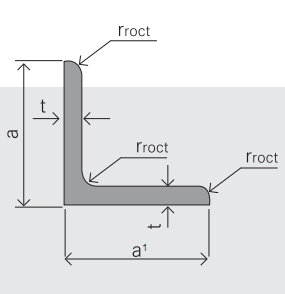
EQUAL ANGLES SIZES |
| ||
a(mm) | a1(mm) | thickness(mm) | length |
50 | 50 | 3.7---6.0 | 6M/9M/12M |
60 | 60 | 5.0---6.0 | 6M/9M/12M |
63 | 63 | 6.0---8.0 | 6M/9M/12M |
65 | 65 | 5.0---8.0 | 6M/9M/12M |
70 | 70 | 6.0---7.0 | 6M/9M/12M |
75 | 75 | 5.0---10.0 | 6M/9M/12M |
80 | 80 | 6.0---10.0 | 6M/9M/12M |
100 | 100 | 6.0---12.0 | 6M/9M/12M |
120 | 120 | 8.0-12.0 | 6M/9M/12M |
125 | 125 | 8.0---12.0 | 6M/9M/12M |
130 | 130 | 9.0-12.0 | 6M/9M/12M |
140 | 140 | 10.0-16.0 | 6M/9M/12M |
150 | 150 | 10---15 | 6M/9M/12M |
160 | 160 | 10---16 | 6M/9M/12M |
180 | 180 | 12---18 | 6M/9M/12M |
200 | 200 | 14---20 | 6M/9M/12M |
6. Material details:
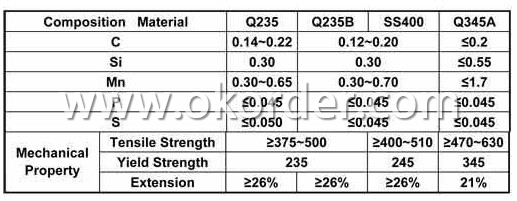
Usage & Applications Hot Rolled Angle Steel
According to the needs of different structures, Angle can compose to different force support component, and also can be the connections between components. It is widely used in various building structures and engineering structures such as roof beams, bridges, transmission towers, hoisting machinery and transport machinery, ships, industrial furnaces, reaction tower, container frame and warehouse etc.
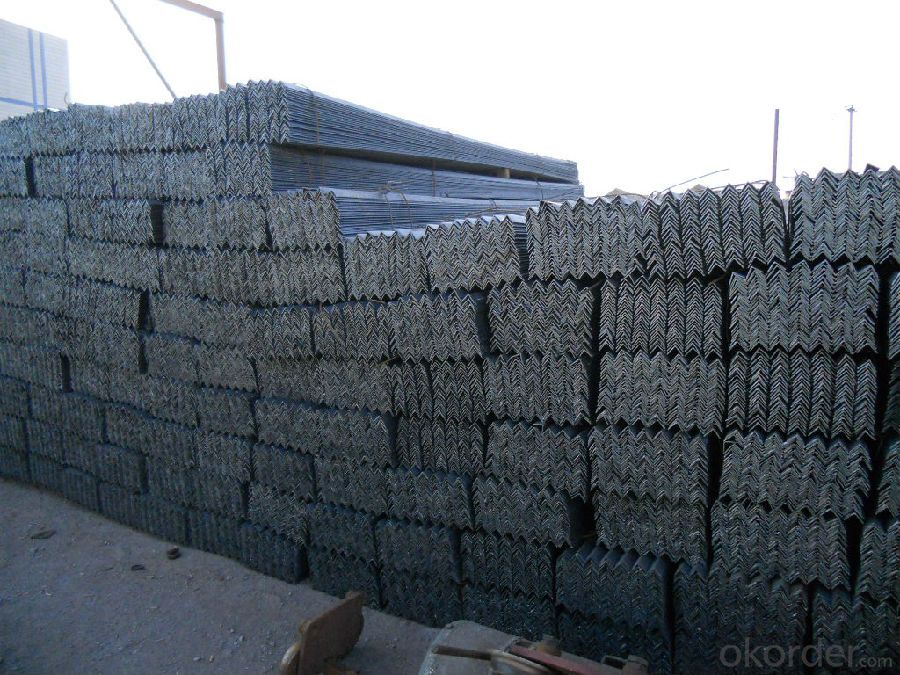
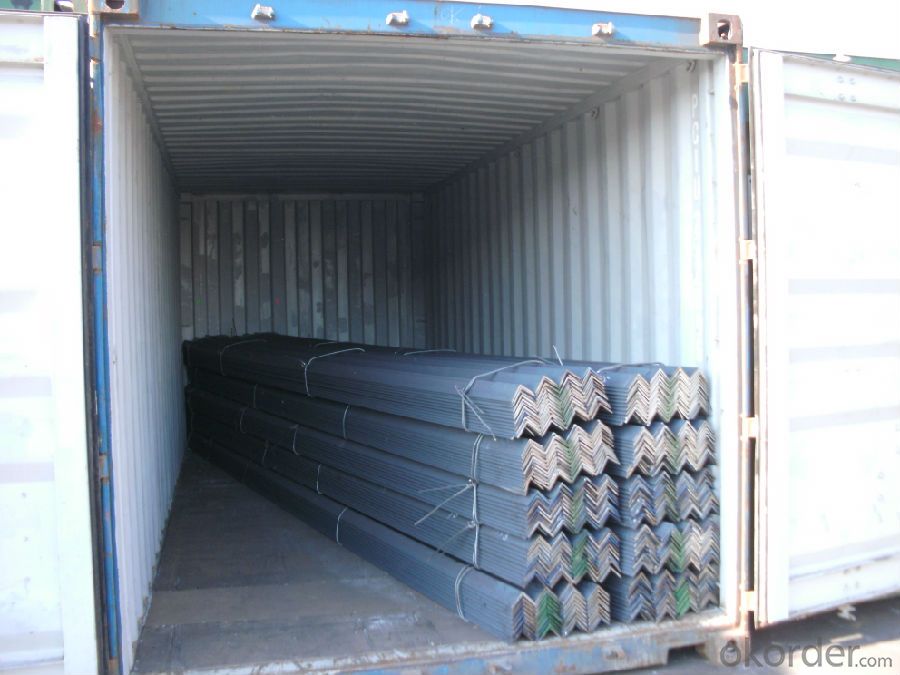
Packaging & Delivery of Hot Rolled unequal Angle Steel for instruction building
1. Transportation: the goods are delivered by truck from mill to loading port, the maximum quantity can be loaded is around 30MTs by each truck. If the order quantity cannot reach the full truck loaded, the transportation cost per ton will be little higher than full load.
2. With bundles and load in 20 feet/40 feet container, or by bulk cargo, also we could do as customer's request.
3. Marks:
Color mark: There will be color marking on both end of the bundle for the cargo delivered by bulk vessel. That makes it easily to distinguish at the destination port.
- Q: What is the difference between equal and unequal steel angles?
- Equal and unequal steel angles are structural steel components that are commonly used in construction and industrial applications. The main difference between these two types of angles lies in their dimensions and properties. Equal steel angles, also known as L-shaped angles, have equal sides and equal angles between them. They are typically used to provide support and stability in various structures, such as buildings, bridges, and machinery. The equal sides of these angles allow for symmetrical distribution of load and provide balanced strength in all directions. This makes them ideal for applications where equal support is required on both sides. On the other hand, unequal steel angles have different side lengths and different angles between them. These angles are used when there is a need for uneven load distribution or when a specific angle is required for a particular application. The longer side of the angle is typically used for load-bearing purposes, while the shorter side may be used for additional support or as a connection point. Unequal angles are commonly used in the construction of frames, brackets, and supports where unequal load distribution is expected. In terms of properties, both equal and unequal steel angles are made from carbon steel, which provides good strength and durability. These angles are typically hot-rolled or cold-formed, depending on the manufacturing process. Hot-rolled angles are produced at high temperatures, resulting in a rough surface finish but improved mechanical properties. Cold-formed angles, on the other hand, are made by bending and shaping the steel at room temperature, resulting in a smoother surface finish but slightly lower mechanical properties. In summary, the main difference between equal and unequal steel angles lies in their dimensions and load distribution capabilities. Equal angles have equal sides and are used for symmetrical load distribution, while unequal angles have different side lengths and are used for uneven load distribution or specific angle requirements. Both types of angles are made from carbon steel and are commonly used in construction and industrial applications.
- Q: How are steel angles manufactured?
- Steel angles are typically manufactured through a process called hot rolling, where a steel billet is heated and passed through a series of rollers to give it the desired shape and dimensions. This process ensures that the angles have a consistent and uniform profile, making them suitable for various structural and construction applications.
- Q: Are steel angles suitable for reinforcing concrete structures?
- Yes, steel angles are suitable for reinforcing concrete structures. Steel angles are commonly used in construction as they provide strength, stability, and support to concrete structures. By adding steel angles to reinforce concrete, the overall structural integrity of the building or structure is enhanced, ensuring its durability and resistance to various loads and forces.
- Q: What are the weight per meter calculations for steel angles?
- The weight per meter calculations for steel angles depend on the dimensions and thickness of the angle.
- Q: What is the maximum load capacity for a curved steel angle?
- The maximum load capacity of a curved steel angle is influenced by several factors, including the angle's dimensions and thickness, the quality of the steel, and the specific application. Typically, structural engineering calculations and analysis are used to determine the load capacity. These calculations consider the steel's material properties, the angle's curvature, and any additional forces or loads it will experience. To establish the maximum load capacity for a particular curved steel angle in a specific application, it is crucial to seek guidance from a qualified structural engineer or consult relevant design codes and standards.
- Q: What are the different surface finishes available for galvanized steel angles?
- Some of the different surface finishes available for galvanized steel angles include hot-dip galvanized, electro-galvanized, painted, and powder-coated finishes.
- Q: What is the typical size range for steel angles?
- Steel angles can vary in size depending on the application and industry. Generally, they are available in widths ranging from 20 to 200 millimeters (mm) and thicknesses ranging from 3 to 20 mm. The length of steel angles can also vary, typically ranging from 3 to 12 meters. These dimensions allow for a wide range of applications, including structural support in construction, machinery manufacturing, and architectural uses. It is worth mentioning that while these size ranges are common, there may be variations and custom sizes available based on specific project requirements.
- Q: Can steel angles be used for solar panel mounting?
- Yes, steel angles can be used for solar panel mounting. Steel angles provide a sturdy and durable framework to securely mount solar panels, ensuring stability and longevity in various weather conditions.
- Q: What are the different methods of reinforcing steel angles?
- There are several methods of reinforcing steel angles, each with its own advantages and applications. One common method is the use of additional steel plates or brackets. These plates or brackets are typically welded or bolted to the existing steel angle to provide additional support and strength. This method is often used in applications where the steel angle is subject to high loads or stresses. Another method is the use of stiffeners, which are typically smaller steel angles or plates welded perpendicular to the existing angle. These stiffeners help to distribute the load more evenly and prevent the steel angle from buckling or bending under stress. This method is often used in applications where the steel angle is used as a structural member, such as in building frames or bridge supports. Additionally, reinforcing steel angles can be achieved through the use of concrete encasement or composite materials. In this method, the steel angle is embedded within a concrete matrix or combined with other materials such as fiberglass or carbon fiber. This combination provides enhanced strength, durability, and resistance to corrosion. This method is commonly used in construction projects where the steel angle is exposed to harsh environments or requires high performance. Overall, the different methods of reinforcing steel angles provide options for increasing the strength, stability, and durability of these structural components. The choice of method will depend on the specific application, load requirements, and environmental factors.
- Q: Can steel angles be used in architectural sculptures and installations?
- Architectural sculptures and installations can indeed incorporate steel angles. These angles possess remarkable versatility and are frequently employed in construction due to their robustness and endurance. They can be effortlessly welded, bolted, or affixed using alternative methods, thereby rendering them ideal for the creation of intricate and elaborate structures. Steel angles can be molded and shaped into a myriad of angles and curves, thereby facilitating the realization of imaginative and distinctive designs in architectural sculptures and installations. Moreover, steel angles can be adorned with diverse coatings or paints to heighten their visual allure and safeguard them against corrosion, rendering them an appropriate choice for both indoor and outdoor installations. In conclusion, steel angles provide the essential strength, flexibility, and potential for aesthetic innovation that architectural sculptures and installations require.
Send your message to us
Hot Rolled unequal Angle Steel for instruction building
- Loading Port:
- Tianjin
- Payment Terms:
- TT OR LC
- Min Order Qty:
- 10000 m.t.
- Supply Capability:
- 50000 m.t./month
OKorder Service Pledge
OKorder Financial Service
Similar products
Hot products
Hot Searches
Related keywords
